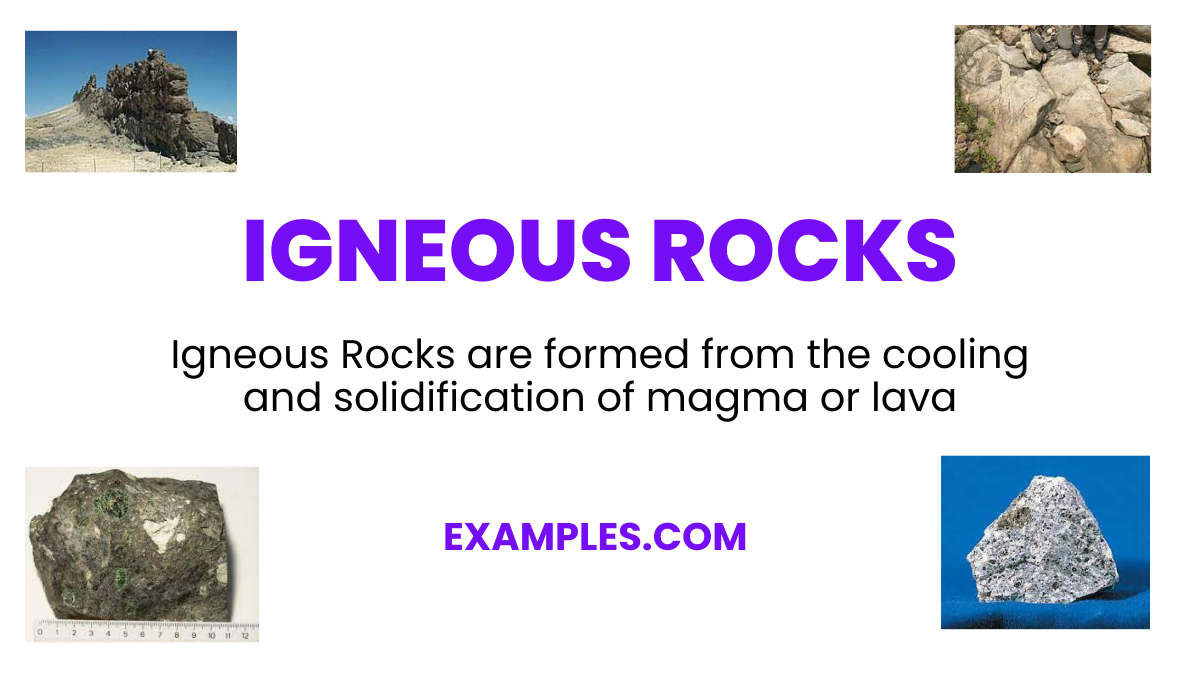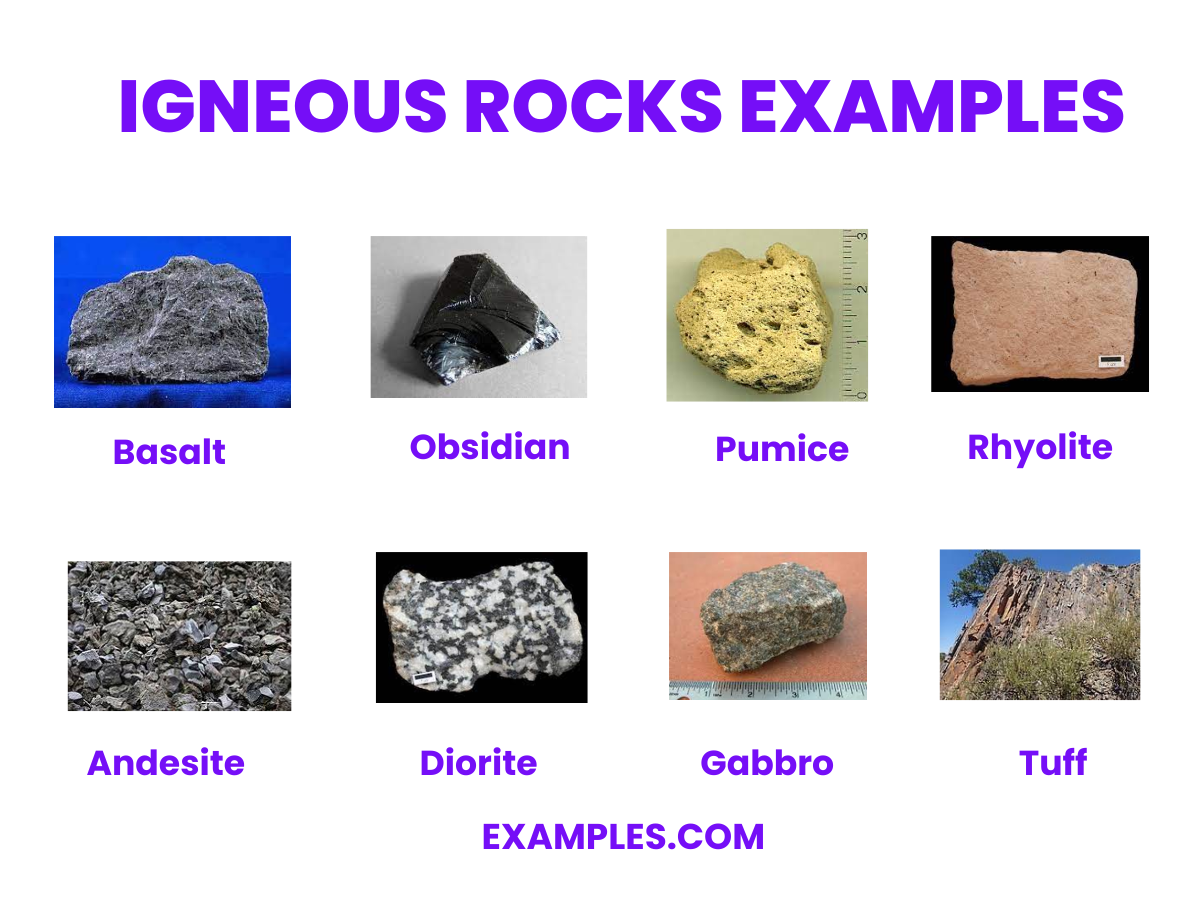Which type of igneous rock forms below the Earth\'s surface?
Extrusive
Sedimentary
Intrusive
Metamorphic

Igneous rocks, born from the heart of volcanic activity, offer a window into Earth’s fiery interior. This guide, tailored for educators and students, provides a thorough understanding of these rocks, from their formation to their classification. We explore various types, their unique characteristics, and real-world examples. The guide simplifies complex geological concepts, making it an invaluable resource for classroom discussions and enhancing geological knowledge. It’s essential for anyone seeking a deeper appreciation of the dynamic processes shaping our planet.
Igneous Rocks are formed from the cooling and solidification of magma or lava. They are a primary indicator of volcanic activity and are classified based on where and how they solidify. Understanding igneous rocks is fundamental for students and teachers, as they offer insights into Earth’s internal processes and surface volcanic activities. Their study is key in geology, revealing the history and composition of the Earth’s crust.
A prime example of igneous rocks is Granite. This rock forms deep underground from slowly cooling magma, resulting in its coarse-grained texture. Granite is known for its durability and is widely used in construction and as a decorative stone. Its composition of quartz, feldspar, and mica gives it a distinctive appearance, making it a popular choice in architecture and design. Granite’s widespread use and recognizability make it an excellent example for teaching about igneous rock formation and characteristics.

Igneous rocks, formed from the cooling and solidification of magma or lava, are foundational to understanding Earth’s geology. This guide, perfect for teachers and students, explores 22 unique and distinct igneous rocks. Each rock is explained with its meaning and practical applications, highlighting their significance in Earth’s crust. From deep underground formations to surface volcanic activities, these rocks provide insights into the dynamic processes of our planet. Discover their diversity, characteristics, and uses in this comprehensive guide.
Each of these igneous rocks offers a unique story of formation and utility. Teachers can use these examples to illustrate the diversity and importance of igneous rocks in geology, environment, and industry.
Igneous rocks, born from the cooling of magma or lava, possess distinctive characteristics that set them apart from other rock types. Their properties are influenced by the cooling rate, composition of the magma, and the environment of solidification. These features are key to identifying and understanding igneous rocks, providing insights into their formation and the Earth’s geological history. Here, we explore the unique characteristics of igneous rocks with examples to aid comprehension.
The classification of igneous rocks is based on their texture, mineral composition, and mode of formation. This classification helps in understanding the conditions under which these rocks were formed. Igneous rocks are broadly categorized into intrusive (plutonic) and extrusive (volcanic) rocks, determined by where the rock solidifies – below or at the Earth’s surface.
Igneous rocks offer fascinating insights into the Earth’s internal processes. Their study is crucial for understanding geological phenomena and Earth’s history. Here are ten intriguing facts about igneous rocks:
Igneous rocks form through the cooling and solidification of magma or lava. The process is influenced by various geological factors, each playing a crucial role in determining the rock’s characteristics. Understanding these causes is essential for students and teachers in geology, as it provides insights into the Earth’s internal dynamics and volcanic activity.
The composition of igneous rocks is diverse, determined by the minerals that crystallize from magma or lava. This composition affects the rock’s color, density, and texture, making it a key factor in classification and study.
The texture of igneous rocks is largely determined by the cooling rate of magma or lava. It plays a significant role in identifying and classifying these rocks.
The formation of igneous rocks is a complex process involving various geological conditions and mechanisms. These processes play a vital role in shaping the Earth’s crust and its volcanic activity.
Igneous rock is typically found in volcanic regions, both above and below the Earth’s surface, and along tectonic plate boundaries.
The color of igneous rock varies widely, ranging from dark shades like basalt to light colors like granite, depending on its mineral composition.
Igneous rocks are used in construction, sculpture, landscaping, and as abrasives. Granite and basalt are popular in architectural and decorative applications.
Komatiite is one of the rarest igneous rocks, known for its high magnesium content and extremely high formation temperatures.
Igneous rocks, with their diverse colors, textures, and uses, provide a fascinating insight into Earth’s volcanic and geological processes. This guide offers a concise yet comprehensive overview, ideal for teachers and students exploring the dynamic world of igneous formations. Embrace this knowledge for a deeper understanding of our planet’s fiery depths.
Text prompt
Add Tone
22 Igneous Rocks Examples
Classification of Igneous Rocks
Which type of igneous rock forms below the Earth\'s surface?
Extrusive
Sedimentary
Intrusive
Metamorphic
What is the main difference between magma and lava?
Magma is molten rock, while lava is solid rock
Magma is found underground, while lava is on the Earth's surface
Magma is cooler than lava
Magma contains more gas than lava
Which of the following minerals is commonly found in igneous rocks?
Quartz
Halite
Gypsum
Calcite
Basalt is an example of which type of igneous rock?
Intrusive
Extrusive
Sedimentary
Metamorphic
Which texture is characteristic of extrusive igneous rocks?
Coarse-grained
Fine-grained
Glassy
Both B and C
What is the primary component of the Earth's continental crust?
Basalt
Granite
Limestone
Shale
Which process leads to the formation of igneous rocks?
Melting and solidification
Erosion and deposition
Compaction and cementation
Heat and pressure
What type of igneous rock is pumice?
Intrusive
Extrusive
Sedimentary
Metamorphic
Which igneous rock has a glassy texture and is often black?
Granite
Obsidian
Basalt
Diorite
Which mineral is not typically found in felsic igneous rocks?
Quartz
Feldspar
Mica
Olivine
Before you leave, take our quick quiz to enhance your learning!

